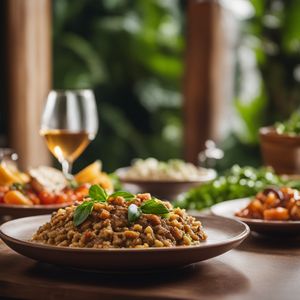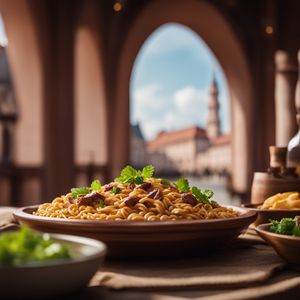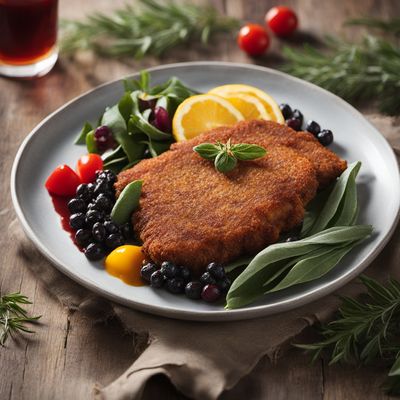
Dish
Münchner Schnitzel
Munich Schnitzel
Münchner Schnitzel is a hearty and satisfying dish that is perfect for a cold winter day. The pork cutlet is pounded thin and then breaded with a mixture of flour, eggs, and breadcrumbs. The cutlet is then fried in hot oil until golden brown. The dish is typically served with a side of potato salad or sauerkraut.
Origins and history
Münchner Schnitzel originated in the city of Munich, where it is a popular dish in beer gardens and restaurants. The dish has since become a staple of German cuisine and is often served at Oktoberfest and other festivals.
Dietary considerations
Dairy-free
Variations
There are many variations of Münchner Schnitzel, depending on the region and the cook. Some recipes call for different types of meat, such as veal or chicken, while others use different breading or frying techniques. Some cooks also add spices or herbs to the breading to create a more flavorful dish.
Presentation and garnishing
Münchner Schnitzel is typically served on a plate with the cutlet arranged in the center. The dish is then garnished with lemon slices and fresh herbs, such as parsley or thyme. The side dish is typically served in a separate bowl.
Tips & Tricks
To ensure that the pork cutlet is tender and juicy, it is important to pound it thin before breading. The oil should be hot enough to create a crispy crust, but not so hot that it burns the breading. It is also important to let the cutlet rest for a few minutes before serving to allow the juices to redistribute.
Side-dishes
Potato salad, sauerkraut
Drink pairings
Beer, such as a Helles or Pilsner
Delicious Münchner Schnitzel recipes
More dishes from this category... Browse all »

Arrosto di vitello farcito reggiano
Italian cuisine

Balšića tava
Montenegrin cuisine

Bife à café
Brazilian cuisine

Cachopo
Spanish cuisine

Cima alla Genovese
Italian cuisine

Costoletta alla valdostana
Italian cuisine

Cotoletta alla Bolognese
Italian cuisine

Cotoletta alla Milanese
Italian cuisine
More cuisines from this region... Browse all »

Baden cuisine
Savory, Hearty, Tangy, Smoky, Sweet

Bavarian cuisine
Savory, Hearty, Tangy, Sour, Sweet

Brandenburg cuisine
Savory, Earthy, Hearty

Franconian cuisine
Hearty, Savory, Flavorful

Hamburg cuisine
Light, Flavorful, Fresh

Hessian cuisine
Hearty, Savory, Flavorful

Lower Saxon cuisine
Savory, Hearty, Salty, Sour, Sweet

Mecklenburg cuisine
Fresh, Simple, Rustic, Savory

